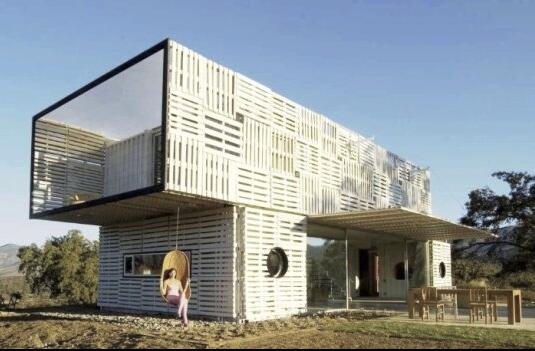The concept of shipping container houses has revolutionized the field of sustainable architecture, offering a unique blend of affordability, versatility, and eco-friendliness. These innovative homes are constructed using repurposed shipping containers, providing an alternative solution to traditional housing. In this article, we will delve into the world of shipping container houses, exploring their design possibilities, benefits, and their role in shaping the future of sustainable living.

Shipping container homes provide a canvas for architectural creativity. These steel structures can be transformed into stylish and modern homes with the right design approach. Architects and designers have embraced the challenge of repurposing shipping containers, developing innovative floor plans, and incorporating cutting-edge design elements. From multi-level homes to compact living spaces, container houses offer endless possibilities for architectural expression.
One of the main advantages of shipping container houses is their eco-friendliness. By repurposing shipping containers, these homes contribute to reducing waste and the demand for new construction materials. Recycling containers also helps minimize the environmental impact associated with traditional construction methods. Furthermore, container homes can be designed to incorporate energy-efficient features such as solar panels, rainwater harvesting systems, and insulation, further reducing their carbon footprint.
Shipping container houses are renowned for their affordability, making homeownership more accessible to a wider range of individuals. Compared to conventional housing, the cost of purchasing and converting a shipping container into a home is significantly lower. Additionally, the modular nature of container homes allows for easier scalability. Homeowners can expand their living spaces by adding more containers as their needs and budgets evolve.
The construction timeline for shipping container houses is remarkably shorter compared to traditional homes. With a pre-existing structure as the base, the process mainly involves modifying and assembling the containers, saving time and labor. Moreover, the portability of shipping containers allows for easier transportation and relocation of homes. This feature is particularly beneficial for those who value mobility or wish to embrace a nomadic lifestyle.
Shipping containers are engineered to withstand the harshest of conditions during transportation, making them inherently durable and strong. Their steel construction provides resistance to fire, wind, and water, ensuring the safety and longevity of the container homes. Proper insulation and ventilation can be incorporated to ensure comfortable living conditions within the container's robust shell.
Shipping container houses offer unparalleled versatility and adaptability. The containers can be stacked, combined, or arranged in various configurations to create unique living spaces. Whether used as individual dwellings or as modular components of larger structures, container homes can be adapted to fit diverse needs. They have been successfully transformed into offices, studios, guest houses, and even commercial spaces, demonstrating their versatility across a range of applications.
Shipping container houses have emerged as an exciting trend in sustainable architecture, offering a fusion of affordability, versatility, and eco-friendliness. These unique homes showcase the possibilities of repurposing shipping containers into stylish and functional living spaces. By embracing container living, individuals and communities can contribute to the reduction of waste, promote energy efficiency, and provide more accessible housing options. With their distinctive blend of aesthetics and sustainability, shipping container houses are redefining the way we perceive and approach residential architecture, paving the way for a more innovative and sustainable future.
Previous: From Raw Materials to Ready-Mix: The Magic of a Concrete Batch Plant
Next: The Importance of Choosing the Right Cement Silo for Your Construction Needs
Copyright:@2020-2021
Comments Please sign in or sign up to post.
0
0 of 500 characters used